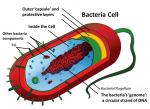|
This section contains 401 words (approx. 2 pages at 300 words per page) |
Sheathed bacteria are bacteria that grow as long filaments whose exterior is covered by a layer known as a sheath. Within the sheath, the bacteria can be capable of growth and division. Examples of sheathed bacteria include Leptothrix discophora (also known as "iron bacteria"), and Sphaerotilus natans.
Sheathed bacteria are common of the bacterial communities in water and in soil. In these environments, the sheath is often coated with precipitates of elements in the water or soil environments, such as oxides of iron and manganese. The elements are unstable in solution, and thus will readily come out of solution when presented with an appropriate site.
The sheath that covers the bacteria can be of varied construction. Much of the structural information has been gleaned from the observation of thin slices of sample using the transmission electron microscope. The sheath surrounding Leptothrix species is glycocalyx-like in appearance. Often the deposition of metals within the sheath network produces areas where the material has crystallized. In contrast, the sheath of Sphaerotilus natans presents the "railroad track" appearance, which is typical of a biological membrane consisting of two layers of lipid molecules.
Electron microscopic studies of Leptothrix species have shown that the bacterium is intimately connected with the overlying sheath. The connections consist of protuberances that are found all over the surface of the bacterium. In contrast, Sphaerotilus natans is not connected with the overlying sheath.
Both Leptothrix and Sphaerotilus natans can exist independently of the sheath. Bacteria in both genera have a life cycle that includes a free-swimming form (called a swarmer cell) that is not sheathed. The free-swimming forms have flagella at one end of the bacteria that propels the cells along. When encased in the sheath, the bacteria are referred to as sheathed or resting bacteria.
Bacterial sheaths tend to be manufactured when the bacteria are in an aquatic or soil environment that contains high amounts of organic matter. The sheath may serve to provide protection to the bacteria in these environments, Also, the ability of metallic compounds to precipitate on the sheath may provide the bacteria with a ready supply of such inorganic nutrients. For example, Leptothrix is able to utilize the manganese contained in the manganese oxide precipitate on the sheath.
Sheaths may also help the bacteria survive over a wide range of temperature and pH, by providing a relatively inert barrier to the external environment.
|
This section contains 401 words (approx. 2 pages at 300 words per page) |


